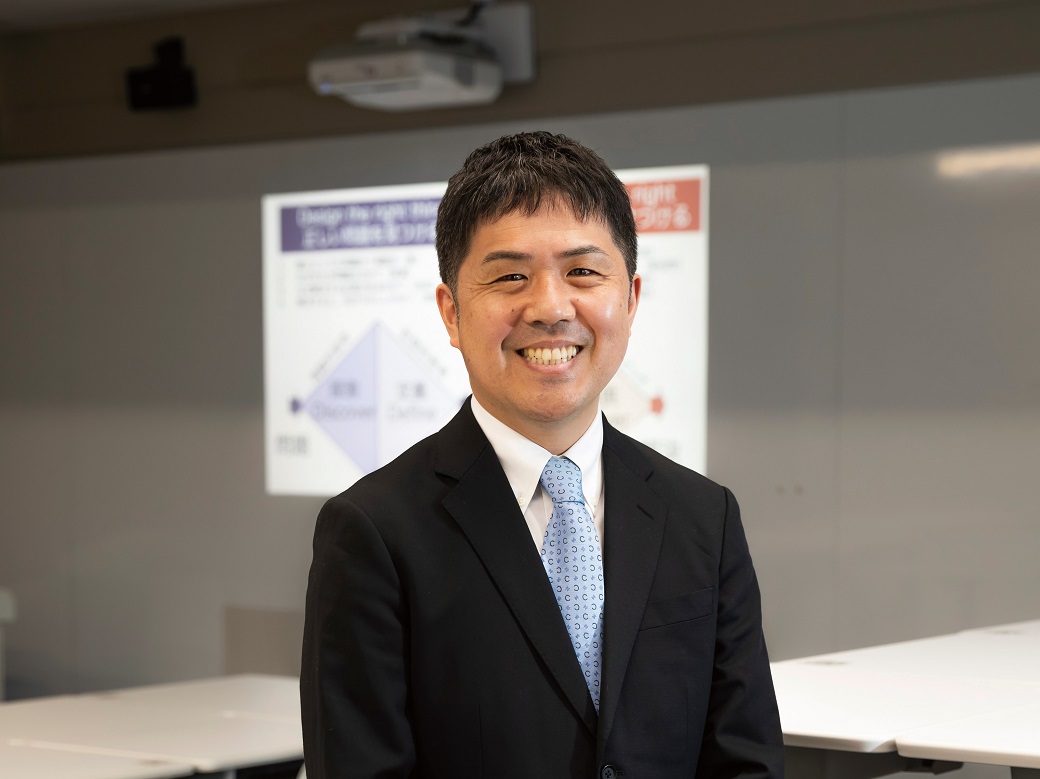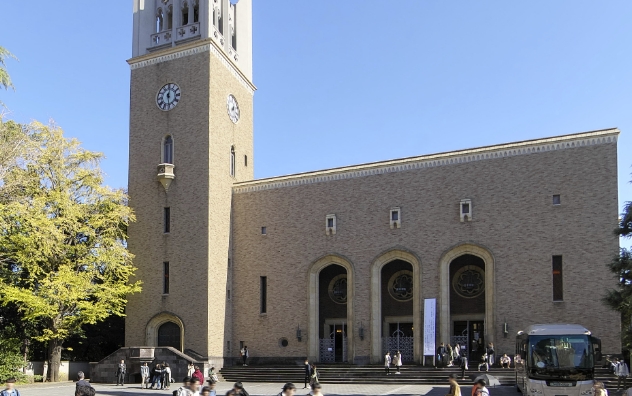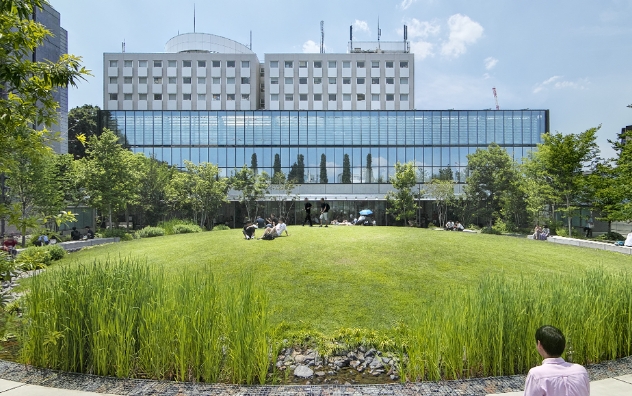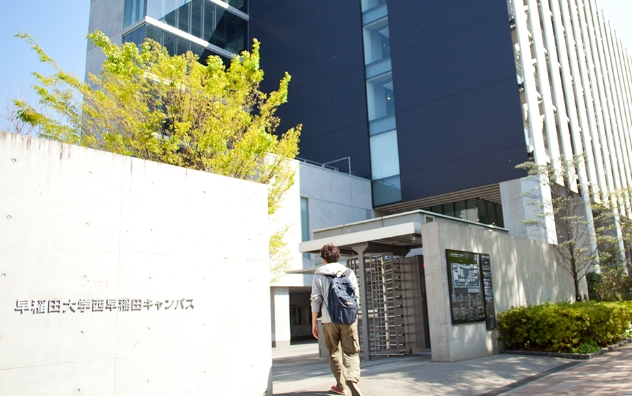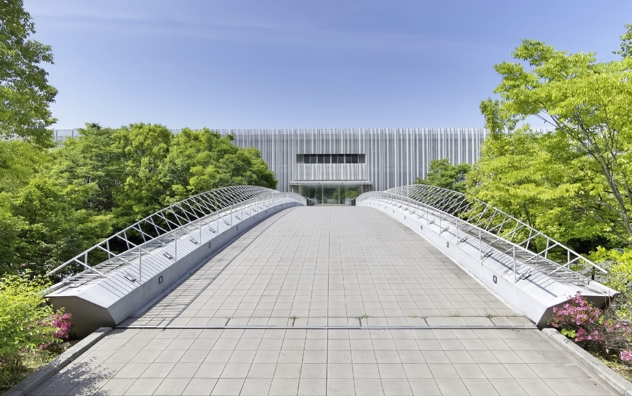Designing creative learning spaces that generate lively interactions
Fri, Oct 18, 2024-
Tags
Learning environments are evolving at a dizzying pace, with online classes and e-learning becoming an increasingly popular option. With the use of ICT tools and AI also garnering attention, what role does the campus play? We spoke to Professor Shigeto Ozawa of the Faculty of Human Sciences.
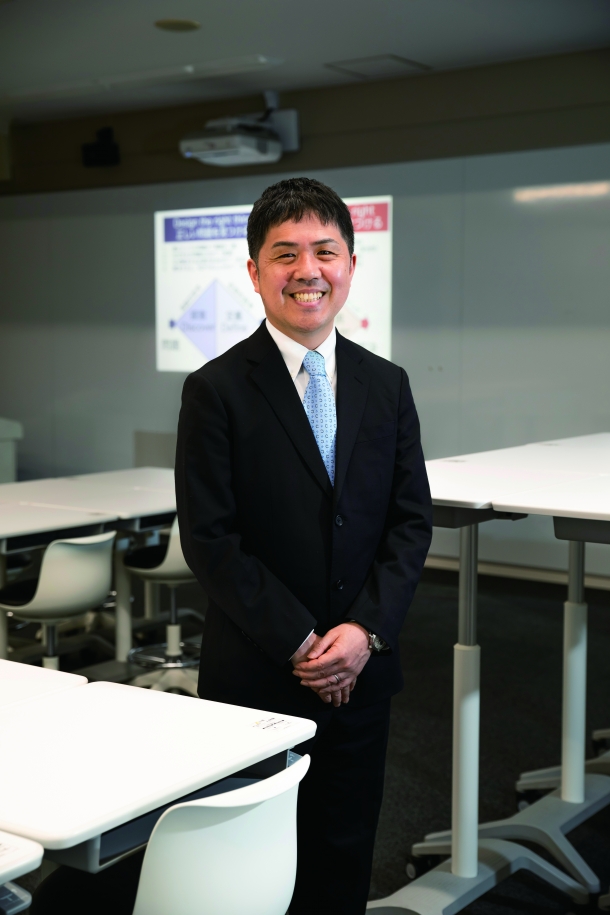
Pursuing a better learning environment through a multifaceted approach
I am researching support for human learning in the field of educational technology, which aims to provide more effective education by utilizing information and cognitive science and ICT. I believe that designing a learning environment is essential to realizing learning that fosters creativity and autonomy, and I have been working to develop such an environment. A typical example is the use of ICT tools and the support of faculty and staff who use them, but I also believe that the design of the atmosphere and “place” that is difficult to express in words is important. Part of my research involves speaking to outstanding instructors from educational institutions and companies, putting their practices into words, and working to increase their versatility so that they can be used in different settings.
Support does not only mean a proactive approach. In recent years, we have been focusing on the idea of removing cognitive biases that hinder learning. For example, in Japan, the barrier between “humanities” and “science” is thicker than in other countries, and the development of “interdisciplinary thinking” that involves learning across various academic fields is lagging behind. When students are reluctant to venture into unknown areas because they are “humanities/science,” this can be considered a cognitive bias in a broad sense. Our current main research topic is to develop methods to correct this cognitive bias.
Active interactions on campus promote inquiry-based learning
In my lectures, I place emphasis on active learning and “inquiry-based learning.” The main goal of my lectures is to help students acquire the ability to ask questions. This is an activity that only humans can do, and AI cannot do. Simple questions like “Why is the sky blue?” are important, but my goal is to help students ask independent questions that they “can’t help but inquire into” based on their own experiences.
In Japan’s primary and secondary education, there is an atmosphere that makes it difficult to deepen research, such as no one raising their hand during class and it being difficult to ask questions outside the scope of the textbook, and this is considered an issue. Although this is gradually improving through revisions to the curriculum guidelines, the reality is that by the time students enter university, there is variation among students in their willingness to ask questions and speak up in class, and in their critical thinking skills.
For this reason, in lectures, students are trained in formulating academic questions in stages. They start with simple exercises, such as having students interview the student sitting next to them, and then build up to practicing observing the things around them with a problem-solving mindset. Waseda University in particular brings together students with diverse backgrounds, so it is easy to notice differences in perspectives and ways of thinking through discussion, and these discoveries become the driving force behind the next round of research. This is possible because we have a place where people gather, the campus, and we would like to pursue designs that will encourage even more lively exchanges.
As part of this, I was also involved in setting up a classroom for active learning called the “CTLT Classroom.” Utilizing ICT, the classroom promotes “interactive, problem-finding and problem-solving lessons” by allowing students to project data from their own PCs onto a screen and providing height-adjustable desks and chairs to facilitate freedom of movement. Faculty and staff who used the classroom gave positive feedback, saying, “I was surprised at how lively the students’ discussions were, much more than I expected.”
If you learn independently, your future possibilities will expand
In education, individual optimization is important, and the support that needs to be provided varies from student to student. It is very difficult to address everyone’s needs in places where many people gather, but if you create a good learning environment, students will naturally learn from each other, and we make the most of ICT tools to support them.
Of course, there is something to be learned from extracurricular activities such as clubs and part-time jobs. However, as long as you are confined to activities within a framework determined by someone else, it is difficult to demonstrate your creativity. On the other hand, once you are able to ask your own questions, you will realize that the world is limitless and freely expanding. I would like to support more creative learning by building an environment that deepens learning that is open to the future, so that students do not narrow their future possibilities by deciding “this is who I am.”
PROFILE
Shigeto Ozawa (Professor, Faculty of Human Sciences)
Graduated from the Faculty of Environment and Information Studies, Keio University in 1999. Completed the second semester of the Doctoral Program in Knowledge Science at the Japan Advanced Institute of Science and Technology Graduate School of Knowledge Science in 2004. After working as a lecturer and associate professor at the Oita University Higher Education Development Center, he became an associate professor at the Faculty of Human Sciences, Waseda University in 2010, and has been in his current position since April 2021. He is involved in systematic education and learning support within the faculty, particularly in the development of academic skills and data literacy, and activities related to self-examination and evaluation.
(Reprinted from CAMPUS NOW No. 251 2024/04)
*This article was originally written in Japanese and was translated using an automatic translation tool.


